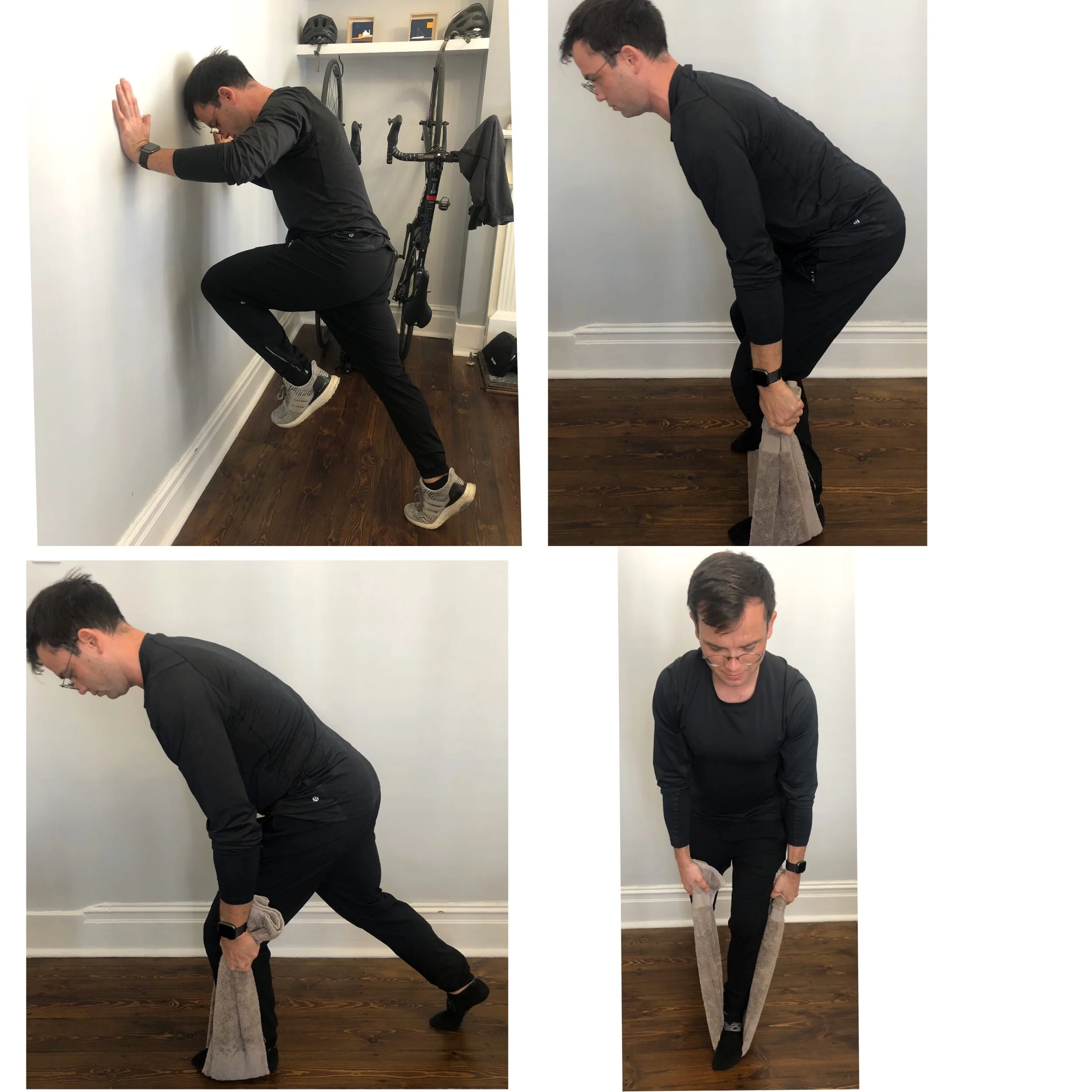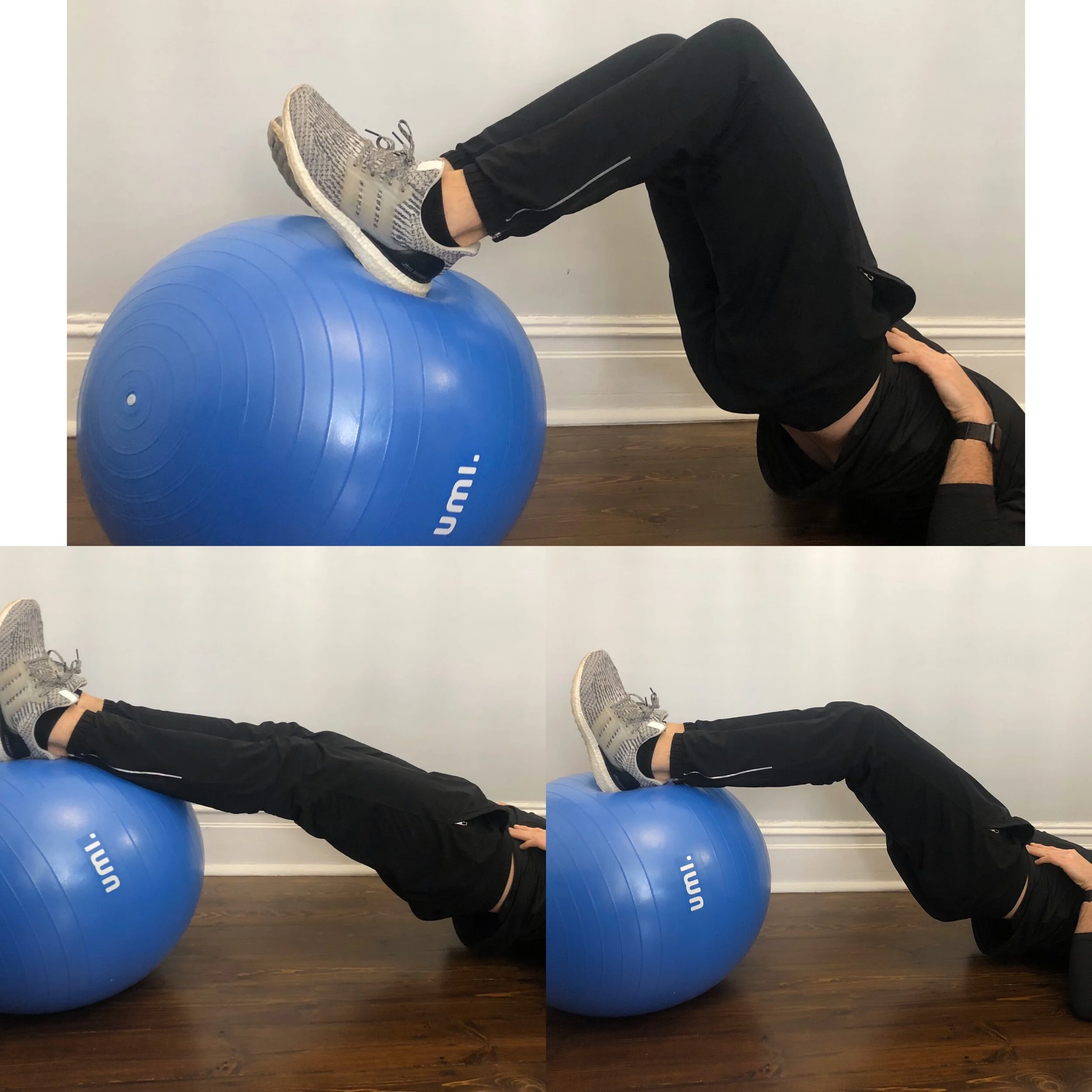The Strength Training Plan
How can strength training at home help keep you running?
Many are now working from home and the opportunity to run may be the only form of exercise available. Do you now just run more or are there other forms of exercise that can help you progress your running and help reduce your risk of injury?
As I have mentioned previously, there is limited evidence surrounding the prevention of injuries in runners. An area that has recently seen a development of research, and a hotly debated topic, is strength training in runners. Strength training may help you reduce injuries but it has also been shown to help improve performance, running economy and can make you a faster and more efficient runner.
Can we create a narrative where strength training is key to running? Strength training has a lot of evidence to support its use in tendon pathologies, arthritic knees and low back pain. Within the running world, the evidence clearly supports performance and efficiency, with emerging studies linking the implementation of strength training strategies with a reduction in injuries. From my clinical experience, I have found that runners who implement strength training strategies have a reduction in injury with positive effects on their performance. So, why is this?
The answer may lie in what running requires. Running is an impact-related exercise involving plyometric power activities. As our foot hits the floor, the floor hits us back and this is called ground reaction force. As we hit the floor and drive from one leg onto the other, we are absorbing the ground reaction force and propelling our bodyweight into the air. These movements require our muscles to produce large amounts of force and further require the muscles, joints and tendons to absorb large amounts of force. Running demands the following of our lower limb muscles:
Calf / Soleus = 6.5 - 8x bodyweight in force
Calf / Gastrocnemius = 2.5 - 3x bodyweight in force
Quadricep (front of thigh) = 4-6x bodyweight in force
Gluteals (bum muscles) = 1.5 - 3.5x bodyweight in force
If there was an injury present, as a physiotherapist, I would diagnose the structures involved and plan your treatment pathway. Initially there may be a period of activity modification and specific exercises to address the pain but generally most rehabilitation plans will lead into strength training. In a clinical environment I would also test the strength of muscles using hand held dynamometers or isokinetic machines and I would design a programme to address weak areas in relation to the injury. Moving forward, within the rehabilitation plan, I would look to incorporate a strength and conditioning plan to improve strength and power from a performance perspective but also for future injury prevention. Unfortunately, due to current restrictions, all gyms and leisure centres are closed and not everyone has a converted garage full of gym weights and squat racks. So, how can you train whilst at home to help your running and reduce the possibility of future injury?
We will discuss different types of muscle contractions and different forms of exercise that can be utilised to build a strength plan. These exercises can:
Improve your technique of movement patterns
Reinforce movement patterns
Increase muscle stiffness
Increase power
Improve force absorption of high impact forces
All of the above can reduce your injury risk and improve your running performance.
Isotonic Ex’s
These are exercises that you would be most accustomed to in the gym. Muscles will lengthen or shorten against a constant load. For example a calf raise up and down off a step.
Eccentric Ex’s
This is sometimes referred to as the negative portion of the exercise. The muscle is still contracting but the length of the muscle is increasing and you are controlling the tempo or lengthening of the muscle fibres. Eccentric exercise is the most demanding on muscle fibres and generally requires set rest durations. This is normally combined with heavy weights. For example the slow lowering of your heel from the top of a calf raise towards the floor.
Isometric Ex’s - Long Holds/Extreme Isometric
This is one of the must under-used and understood types of training/muscle contraction. The muscle contracts but there is no movement of joint angle. Long hold or extreme isometrics are holding a contraction or position for a longer duration of time. The angles are usually based around the task you are training for or range of motion where pain is an issue. For example, a squat at 90 degree knee angle for 20secs.
Isometric Ex’s - Short Holds or Push/Overcoming
Sometimes referred to as overcoming Isometrics. These are short muscle contractions exerted at maximal force, pushing against a static load. The aim is to pick specific joint angles in relation to a task and work maximally, recruiting as many muscle fibres as possible. With the short maximal holds there is limited muscle damage so they can be performed during training blocks with little muscle hangover or rest periods required.
Combination of Eccentric and Isometrics/Yielding
This is the slow lowering/eccentric portion of a movement with a pause at certain angles, normally at the end of range of motion. The isometric portion increases time under tension of the muscle contraction. For example, the slow lower of a deadlift with a pause holding the weight just above the floor.
Other forms of training and contractions that we can utilise in our training are Quasi Isometric / Iso Switches and Isometric Catches which will be further discussed in a post on isometric training for runners (coming soon). Isometric exercises can be utilised in various different forms with only a small range covered during this blog post.
These different forms of muscle contraction can be used within the same movement patterns to yield different results. For runners, the main groups of muscles that we need to target are the calf complex (soleus and gastrocnemius), hamstrings, quadriceps and gluteals. The following plan will explore the different types of muscle contractions targeting movements and ranges specific to running. The plan is not intended to replace a gym environment but offers guidance for runners who are at home struggling to maintain a strength routine or who would like to challenge their system through this period.
Isotonic - week 1
Smooth lower and raise through the movement pattern. Aim for 1-2secs lower and 1-2sec raise
Calf Raise 1 -Gastrocnemius focused
Calf Raise 2 - Soleus focused
Bulgarian Split Squat - Glute, hamstring and quadricep focused
Hamstring Bridge - Hamstring and glute focused
Eccentric - Week 2-3
Slow 6sec Eccentric phase
Calf Raise 1 - Gastrocnemius focused. Slow lowering of the heel
Calf Raise 2 - Soleus focused. Slow lowering of the heel
Bulgarian Split Squat - Glute, hamstring and quadricep focused. Slow lowering towards the floor
Hamstring Roll Out - Hamstring focused. Slow rollout of the ball
Isometric Long Holds - Week 4
Long HOLDS in running specific ranges and positions
Calf Raise Wall Push - Calf focused, push up through toes against the wall
Calf Raise Wall Sit - Calf focused, push and hold heel in the air
Bulgarian Split Squat - Glute, hamstring, squat and calf focused, maintain static position with heel in the air
Hamstring Bridge - Glute and hamstring focused. Hold hips in the air driving heel into the bench
Split Squat Lunge- Glute and quadricep focused. Hold static lunge position
Isometric Short Holds or Push/Overcoming - Week 5
Hold at a running specific angles with maximal exertion of force in a static position for 4secs. Positions of work and effort should be similar to running specific angles.
1. Calf Raise Wall Push - Angle yourself into the wall and push up onto the ball of your toes pushing as hard as you can into the wall for 4secs x6 each leg
2.Calf Raise Wall Push Catch - As above but switch between legs after each 4secs focusing on creating stiffness through your calf as quickly as possible (try to avoid your heel dropping towards to the floor like mine does!) 4secs x6
3.Squat Towel Pull - Standing on a towel at the top 1/3 of a squat position. Hold with a tight grip and try to straighten your legs and stand with as much force as possible . Hold for 4secs x8
4.Hamstring Bridge - Hold a single leg bridge position. Drive your heel down with as much force as possible and hold for 4secs x6 on each leg
5.Split Squat Towel Pull/Row - Similar to the squat towel pull but in a split squat position. Drive all the force through your front leg, hold for 4secs x8 on each leg
Combined Eccentric and Isometric - Week 6
Eccentric = the lengthening of a muscle under a contraction, sometimes referred to as the negative portion of a lift. During these exercises we are aiming for 4-6 sec eccentric portion
Each exercise will incorporate an isometric (static) hold at different ranges for 4-6 sec duration, ranges will be dependant upon running
After each hold you can return quickly (1sec) to the start position.
The tempo for the above would read, 6-6-1: 6 (eccentric) - 6 (isometric) - 1 (return to start position)
Calf Raise 1 - Off a Step
Calf Raise off a step as in week 1 and 2
Start at the top of a calf raise (on tiptoes-toes_
Slowly lower your heel to below the horizontal
Hold for 6secs at the bottom
Raise up to the horizontal and hold for a further 6secs
Return to the top of the calf raise
Tempo 6(eccentric)-6(isometric hold1)-6(isometric hold2)-1(return to top)
Calf Raise 2 - Bridge on Step
Calf raise in bridge position foot on a step as in week1 and week2
Hips in the air, raise up onto your tip-toes
Lower heel to below the horizontal and hold for 6secs
Raise heel to the horizontal and hold for 6secs
Return to start position on tip-toe
Tempo 6(eccentric)-6(isometric hold1)-6(isometric hold2)-1(return to top)
Bulgarian Split Squat
Start in a split Bulgarian split squat position as in week1 and week2
Slower lower so that your front knee is bent to 45-60degrees and hold for 6secs
Raise up so that the front knee is bent to 20-30degrees and hold for 6secs
Return to start position
Tempo 6(eccentric)-6(isometric hold1)-6(isometric hold2)-1(return to top)
Hamstring Roll Out
Feet on a ball, bridge up and hold with your hips in the air
Slowly roll the ball away taking 6secs to fully extend your knees straight
Hold the bridge with your knees straight for 6secs
Roll the ball back in so that your knees are bent at roughly 35degrees and hold for a further 6secs
Roll the ball back to the start position, knees bent to 90degrees and repeat





